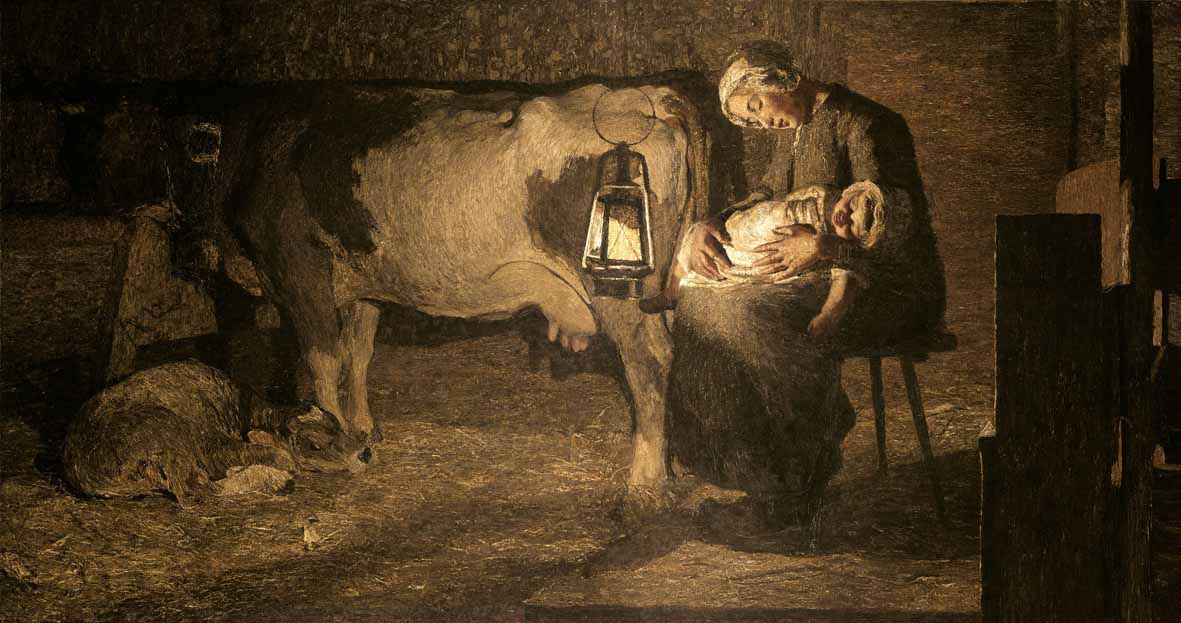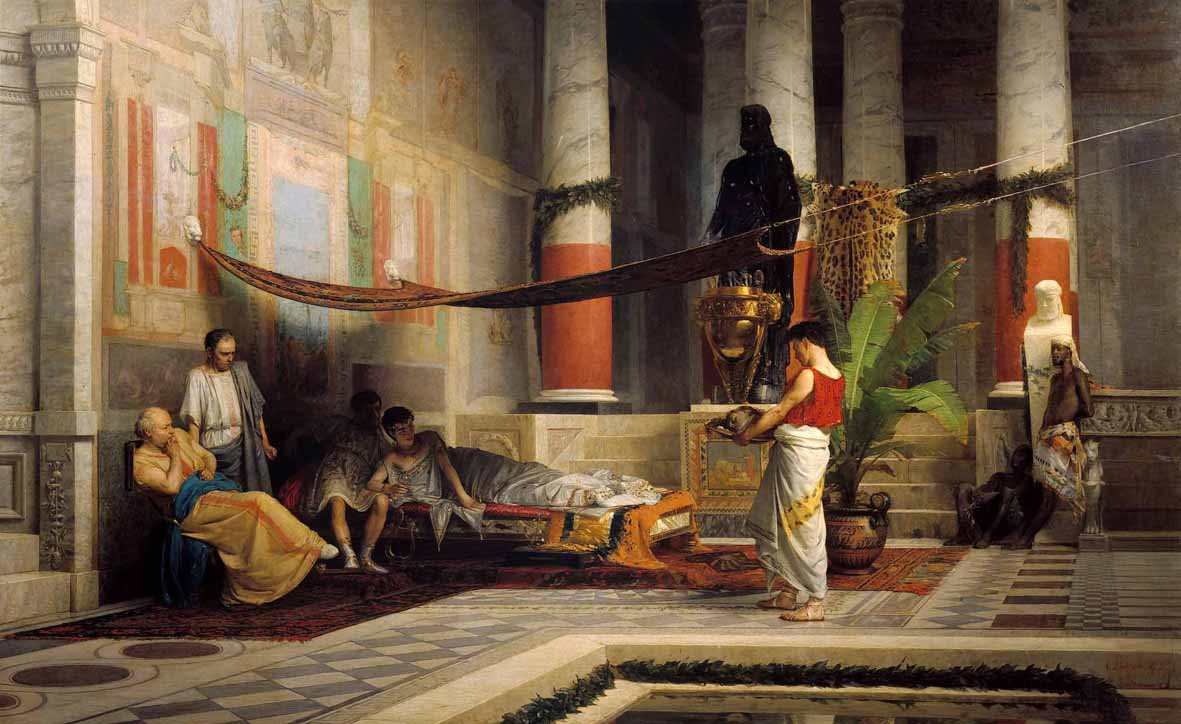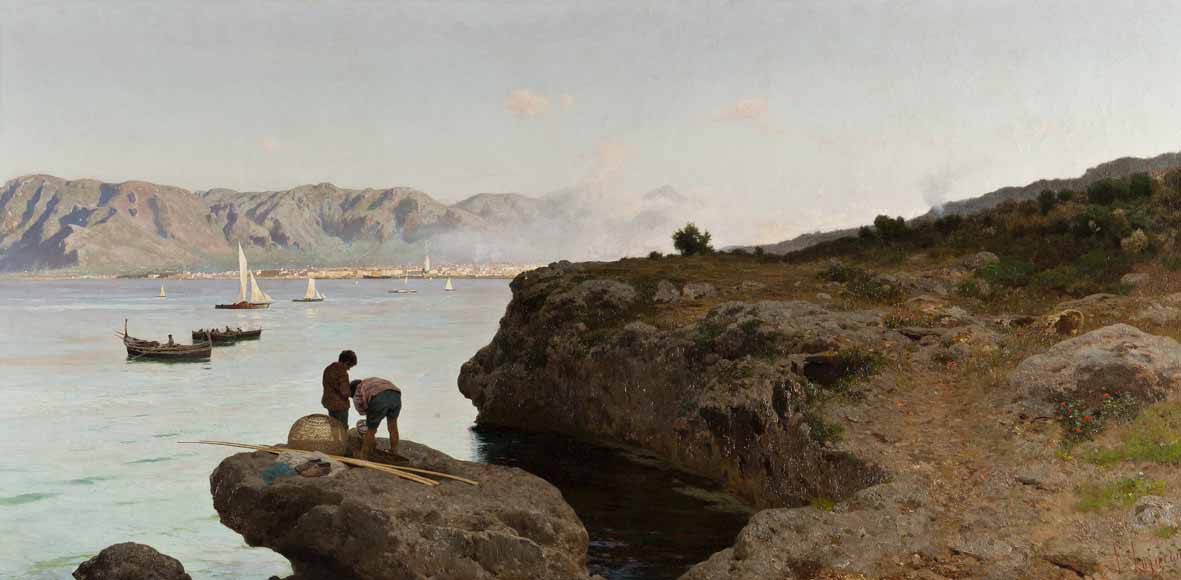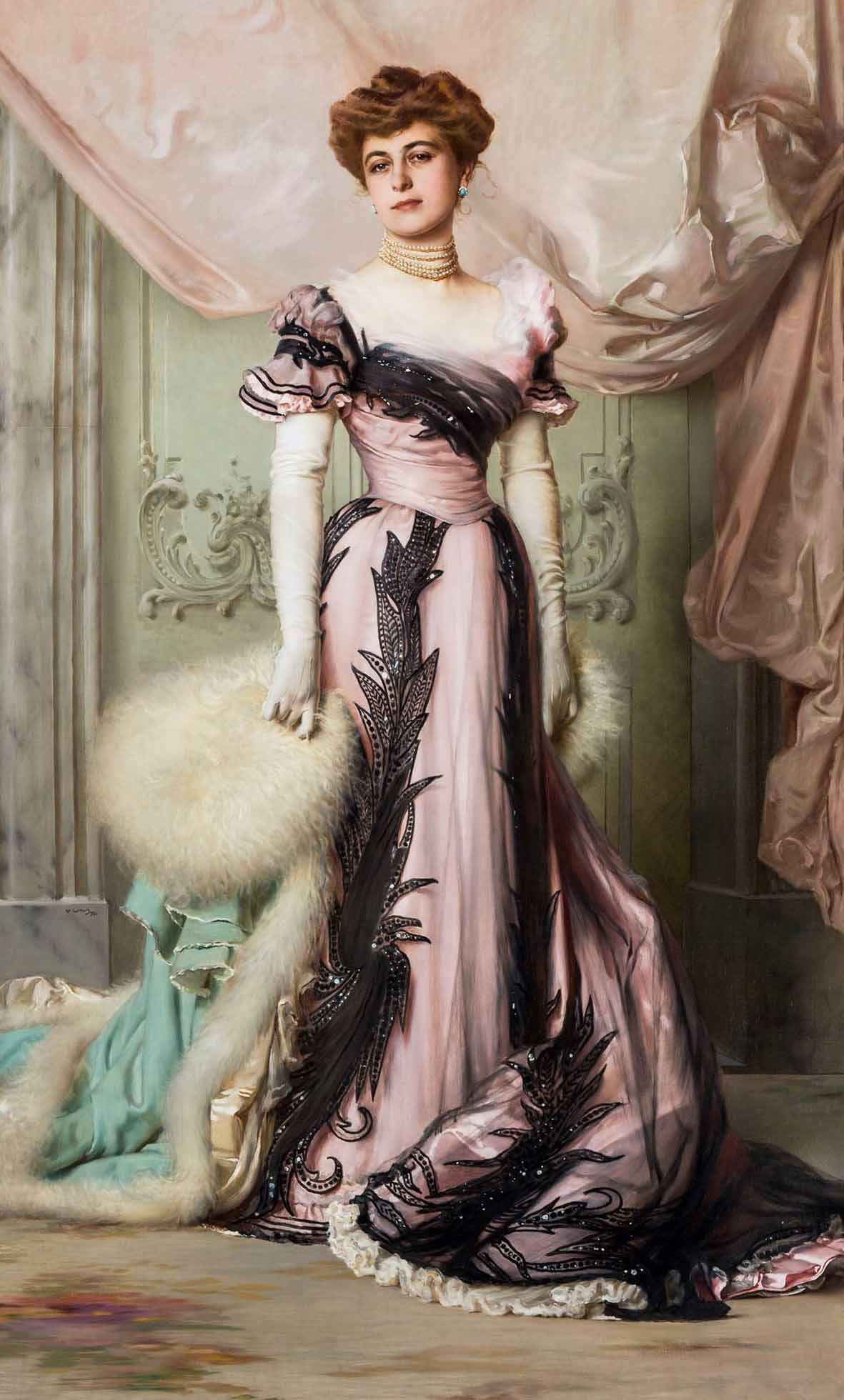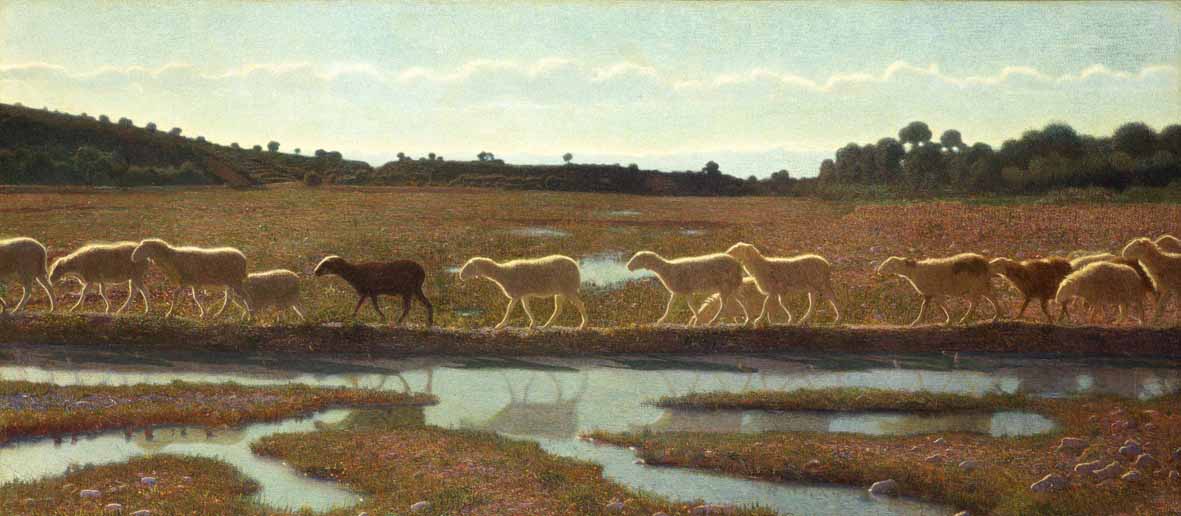by Redazione , published on 16/01/2019
Categories: Exhibitions
/ Disclaimer
Previews and images of works from the major exhibition 'Ottocento. The Art of Italy between Hayez and Segantini' from February 9 to June 16, 2019 in Forli.
The major exhibition on the nineteenth century that will be held in Forlì from February 9 to June 16, 2019, entitled Ottocento. The Art of Italy between Hayez and Segantini: the presentation took place as part of the Romanticism exhibition currently underway at the Gallerie d’Italia in Piazza Scala in Milan (in a few days you will be able to read a review of it on Finestre sull’Arte).
In the presence of the general coordinator Gianfranco Brunelli, the two scientific curators Fernando Mazzocca (the latter also curator of the Romanticism exhibition) and Francesco Leone, the presentation began with the speech of Michele Coppola, Central Director of Art, Culture and Historical Assets of Intesa Sanpaolo, who related this important initiative to a synergy between the cultural commitment of Banca Intesa and Fondazione Cassa dei Risparmi di Forlì, reiterating the importance of a path marked by the activity of the culture project of the same bank in which Dr. Brunelli and Professor Mazzocca play a decisive role. Referring to this fruitful collaboration and thanking Professor Giovanni Bazoli, Chairman Emeritus of Intesa Sanpaolo and promoter of the culture project, Gianfranco Brunelli introduced the exhibition by illustrating its spirit and intent in relation to the history and cultural debate of the years taken into consideration ranging from the Unification of Italy to the eve of the Great War with particular reference to 1911, the year in which the Fiftieth Anniversary of Unification was celebrated.
After emphasizing the difficulty of the unification process, he evoked the protagonists of literary culture, including Carducci, Pascoli, D’Annunzio and Gozzano, as a valuable key to understanding the complex ideological and cultural travail of troubled years. Fernando Mazzocca illustrated the exhibition’s itinerary, emphasizing the effort that, together with the other curator, Francesco Leone, went into the selection of exemplary works between painting and sculpture that marked the vicissitudes of Italian art in these years of great changes in which culture and art itself were entrusted with the difficult but also fascinating task of unifying the country. A country that, still deeply divided anthropologically, economically and socially, according to the curators was able to recognize itself in art that represented its past and was also a formidable tool for reflection on the present. Referring to the ten sections into which the exhibition is divided, the variety of genres between historical painting and that of social denunciation, scenes of modern life and the portrait, the veduta and the landscape, declined in the most diverse forms and languages, by the artists who were identified as protagonists of these fifty years of great renewal in Italian art, was emphasized.
The two personalities chosen as a point of reference for the beginning and end of this compelling parable were Francesco Hayez, the first and last of the Romantics celebrated by Mazzini as “interpreter of the destinies of the nation,” and Giovanni Segantini, who in the last part of the century projected into an international dimension a strong desire for renewal determined no longer by confrontation with history but with the universal motif of the dialogue between man and nature and with the ideal of motherhood. Compared to a Manichaean view of the second half of the Italian 19th century that divided the “good guys” represented by the Macchiaioli and Divisionist experimenters and the “bad guys” identified in the historical painters consecrated by officialdom, the exhibition proposes a more innovative and complex vision in which the force of renewal is always seen in close dialectic with the tradition that is inalienable for the very identity of Italian art. Thus, masterpieces of so-called official art will be placed in dialogue with the most experimental and disconcerting works projected into modernity: these are hardly visible works such as Hayez’s The Destruction of the Temple of Jerusalem, Giovanni Muzzioli’s The Funeral of Britannico, Giovanni Fattori’s Lo staffato, Telemaco Signorini’s The towpath, Vittorio Corcos’s Reading by the Sea, Giuseppe Pellizza da Volpedo’s The Mirror of Life and Giovanni Segantini’s The Two Mothers.
Finally, the curators believe that, for today’s visitors, it will be particularly engaging thanks to the presence of works exhibited on those occasions, to project themselves into the atmosphere of the great National Exhibitions that, starting with the one in Florence in 1861 up to those of 1911, between Turin Florence and Rome, accompanied and concluded the fascinating journey of an Italian art in search of identity and the expression of universal values. At this link you can find more statements from the curators. Below are images of some of the works that will go on display.
 |
| Giovanni Segantini, The Two Mothers (Lantern Effect) (1889; oil on canvas; Milan, Galleria d’Arte Moderna) |
 |
| Giovanni Segantini, Spring Pastures (1896; oil on canvas; Milan, Pinacoteca di Brera) |
 |
| Giovanni Muzzioli, Poppea’s Revenge (1876; oil on canvas; Modena, Museo Civico d’Arte) |
 |
| Francesco Lojacono, From the Marine Hospice (1891; oil on canvas; Rome, National Gallery of Modern and Contemporary Art) |
 |
| Ettore Tito, July (On the Beach) (1894; oil on canvas; Trissino, Fondazione Progetto Marzotto) |
 |
| Vittorio Matteo Corcos, The Countess Carolina Sommaruga Maraini (1901; oil on canvas; Foundation for the Swiss Institute in Rome) |
 |
| Pietro Canonica, Donna Franca Florio (1904-1907, patinated white marble; Rome, Museo Pietro Canonica at Villa Borghese) |
 |
| Telemaco Signorini, The towpath (1864; oil on canvas, 54 x 173.2 cm; Private collection) |
 |
| Giuseppe Pellizza da Volpedo, Lo specchio della vita (1895-1898; oil on canvas; Turin, Gam - Galleria Civica d’Arte Moderna e Contemporanea) |
 |
| Major exhibition of the 19th century from Hayez to Segantini in Forli, previews and images of the works |
Warning: the translation into English of the original Italian article was created using automatic tools.
We undertake to review all articles, but we do not guarantee the total absence of inaccuracies in the translation due to the program. You can
find the original by clicking on the ITA button. If you find any mistake,please contact us.
